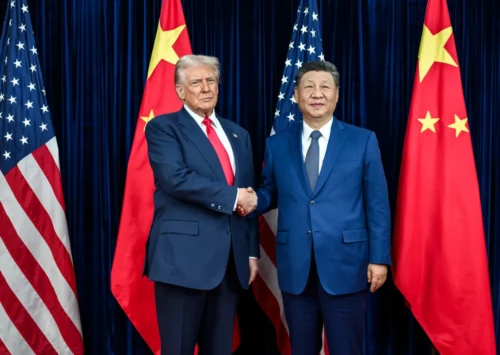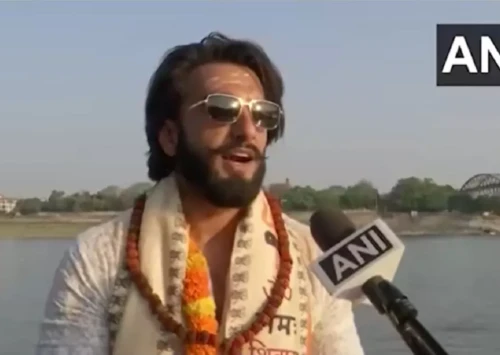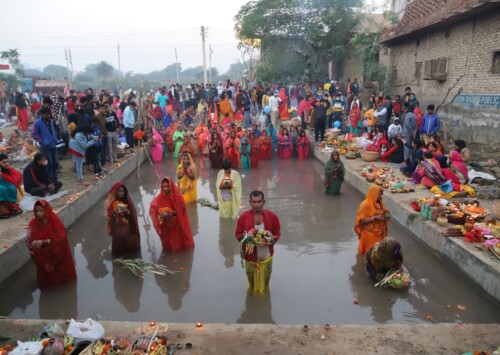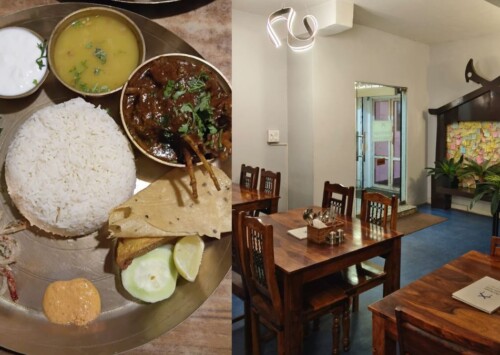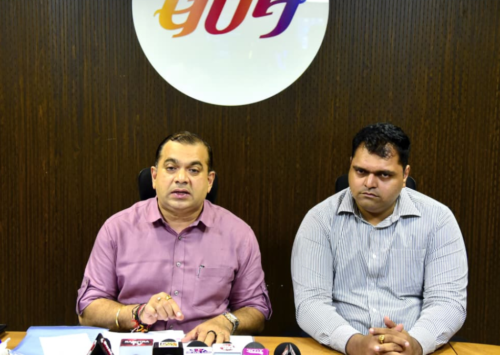Indian Air Power: Flying High Despite Low Budgets, Slow Induction

In the next 15 years, the IAF would need to induct at least 500 aircraft to stay at the same place as today in terms of its total strength
The Indian Air Force is a vital component of the Indian defence forces and with over 1,776 aircraft, it remains the fourth-largest fighting force in the world. However, more than half of its aircraft are aged, if not outmoded, and though several governments have recognised the need to speed up induction of new planes, the procurement processes continue to advance at snail’s pace.

In the next 15 years, the IAF would need to induct at least 500 aircraft to stay at the same place as today in terms of its total strength
In every single battle involving the Indian defence forces, including the recent conflict with Pakistan following a terror attack in India, the Indian Air Force has always played a pivotal role in protecting the country. The significance of the stellar role played by the IAF in external conflicts becomes even more apparent when one considers that the force is fighting at almost 66 pc of its sanctioned strength, due to prolonged delays in induction of new aircraft, a problem that has plagued the IAF and other wings of the Indian armed forces, almost since the time of the independence.

With over 250 aircraft, including MiG21s, MiG 27s, Jaguars and some Mirage 2000s are set for retirement within the next 15 years
The IAF is currently functioning with 31 of 42 sanctioned squadrons, but its effective strength is only 29 squadrons, as two squadrons of MiG-21 Bison will be retired from services in the current year itself, indicating a shortfall of over 230 aircraft. It currently operates about 1,770 aircraft, putting it as the fourth-largest air force in the world, after the United States, Russia and China and far ahead of Pakistan.
IAF may currently enjoy a significant numerical superiority over Pakistan, but faces a severe shortage vis-à-vis China and moreover, almost 40 pc of the aircraft being flown are ageing or straight outmoded, with over 250 aircraft, including MiG21s, MiG 27s, Jaguars and some Mirage 2000s set for retirement within the next 15 years. This means that in the next 15 years, the IAF would need to induct at least 500 aircraft to stay at the same place as today in terms of its total strength, which is no great solace as other global powers, notably China, have extremely ambitious plans for fleet augmentation, qualitatively as well as quantitatively. With limited replacements and continued delays in acquiring modern aerial combat platforms, the IAF faces a steep uphill battle to maintain its combat readiness.
Need to expedite modernisation, expansion

The IAF is currently functioning with 31 of 42 sanctioned squadrons
In face of what is happening, not just in India’s neighbourhood, but in the world of aviation, India needs to up its game in modernisation, which certainly got a boost with the acquisition of Dassault Rafale multirole combat aircraft, besides the existing squadrons of Sukhoi Su-30MKI aircraft. But India needs to treat Rafale as the starting point of its fleet modernisation and upgradation, rather than a major milestone or a landmark.
With the world moving fifth generation aircraft and beyond, India needs to equip its air force also with weapon systems that can compete in the ever-changing airspace. Its biggest plan, in the last few decades, for acquisition of 126 Medium Multi-Role Fighter Aircraft (MMRCA) aircraft, failed to take off as negotiations between the selected foreign partner Dassault Aviation of France and Hindustan Aeronautics Limited (HAL), the sole Indian manufacturer of aircraft, failed to conclude. In 2015, Narendra Modi, who had taken over as Prime Minister a few months earlier, decided to terminate the stalled negotiations and get into a Government-to-Government deal with the French government for purchase of 36 Rafales, all in flyaway condition, as against the initial decision of the government to buy 18 Rafale aircraft in fly-away condition and HAL to manufacture 108 aircraft in India through a transfer of technology by Dassault.

India needs to equip its air force also with weapon systems that can compete in the ever-changing airspace
While the 36 Rafales are now part of the IAF, the situation regarding further acquisitions is back to the drawing board, just as it was in 2007. In 2018, the government rebranded MMRCA as the Multi-Role Fighter Aircraft (MRFA) programme in 2018, a USD 25 billion programme for 114 foreign-built jets with significant local production. Among the leading contenders for the major deal are Dassault Aviation with its Rafale, troubled American aircraft manufacturer Boeing with F/A-18 Super Hornet, Eurofighter Typhoon and Sukhoi Su-35. The MRFA aims to deliver 110 jets by 2040, effectively closing the gap while providing a proven 4.5-generation platform to complement the indigenous fleet.
But as even this procurement is set to undergo a tortuously slow process, for now the best hope for the Indian Air Force is that HAL ramps up its deliveries of the indigenous fighter Tejas. IAF has ordered 180 Tejas Mk1A jets. It is a 4.5-generation Light Combat Aircraft and carries an advanced AESA radar, improved avionics and a 50 pc indigenous content level. Deliveries of Mk1A jets are scheduled to begin from this year and HAL has set a target of increasing its production to 24 of these jets annually by 2028 and hence complete the IAF order rapidly.
While the Tejas manufacturing is progressing, but for now it seems that the IAF has no other potential supplier, putting its fleet updation programme solely in the hands of HAL. However, like any other defence programme, even Tejas can run into unforeseen hiccups, creating another challenge for the IAF.

India strives to bolster its air power amid rising regional tensions
Beyond Tejas Mk1A, the IAF is also considering Tejas MkII that is in advanced stages of development. It is a more advanced and heavier aircraft with enhanced payload of 6.5 tonnes and the GE F414 engine. According to HAL, it is on track to complete production of the first Tejas MKII by October this year and is targetting a maiden flight by the end of March 2026. The IAF hopes to add 120 of these aircraft to its fleet by 2040. Yet another indigenous aircraft that the IAF is seeking to induct is the Advanced Medium Combat Aircraft (AMCA), India’s ambitious 5th-generation stealth fighter, that is currently under development.
On May 26, the Ministry of Defence announced that it had given the go-ahead for the AMCA project in a public-private partnership mode, with Aeronautical Development Agency (ADA) as the lead development agency. The AMCA MkI, that was conceptualised in the year 2008, is slated for service entry by 2035, featuring stealth, supercruise and internal weapons bays. By 2040, the IAF anticipates inducting at least 40 AMCA MkI jets, with around 20 MkII variants, equipped with an indigenous engine joining later.
Lower strength of squadrons also hinders pilot training as it is the bedrock of the capabilities and one of the first to be impacted by lower squadron strength as the necessary flying hours required to attain and maintain the desired level of flying skills are not available.
Squadron constraints will also put severe stress on the available fleet thus reducing the life of their airframes. The reliance on outdated equipment also significantly strains pilots and ground crew, negatively affecting morale and training efficiency. Between 2001 and 2021, nearly 200 aircraft were lost. This includes several fighter jets, helicopters and transport planes.

Indian defence budget has risen consistently
Depleting squadrons, falling budgets
One of the biggest challenges for IAF in keeping fighting fit is its low budget. Despite a rise in challenges in defending the country against external threats, the IAF has seen its budgetary allocations depleted, along with those for its sister services, the Indian Army and the Indian Navy.
Though in nominal terms, the Indian defence budget has risen consistently, rising to INR 6.81 trillion (USD 79.78 billion) in the latest budget presented in February, in real terms it has consistently fallen and more so in terms of defence outlay as part of the total budget of the Indian government as well as in terms of defence spending vis-a-vis Indian Gross Domestic Product (GDP).
As a ratio of GDP, Indian defence budget was 2.9 pc in the year 2000 and has since then fallen progressively, reaching 1.9 pc this year. Similarly, as part of the total budget, defence budget has declined from 16 pc in the year 2000 to 13.45 pc this year.

World’s leading air powers
The latest budget is much lower than the 3 pc of GDP mark that many experts have pitched as the bare minimum needed for India, keeping in mind the situation of its armed forces and the threat perceptions in the South Asian region.
To make matters worse for the defence forces, an overwhelming share of the defence budget is earmarked for paying salaries and pensions to the current personnel and the retired personnel of the armed forces, leaving about 22 pc for capital expenditure or modernisation and expansion.
Moreover, the share of the budget allocated to procurement has been declining over the years largely due to rising personnel costs. Today, salaries and pensions make up more than half the budget, over 54 pc with pensions alone accounting for 23 pc of the budget, compared to the 22 pc earmarked for procurement.
In absence of any real increase in annual defence allocations and the low share allocated to procurement in the budget, the modernisation and expansion plans of the Indian Armed Forces fail to progress, even as the security environment in the region remains tense and despite the easing of tensions in relations with China, the threat from Pakistan and its proxies on the western borders means that India can hardly afford to let its guard down and keep its armed forces fighting fit.
It is primordial for India to not only significantly enhance its defence budget, but also boost the domestic manufacturing capacity and ease procurement processes in order to ensure that the Indian Air Force continues to rule the skies.

The share of the budget allocated to procurement has been declining over the years
Opportunities and challenges in privatisation
For a long while, there has been a very vocal and voluble debate in India about the need for privatisation in the aerospace industry, notably to break the ‘monopoly’ of HAL. There is a clear merit in the argument for opening up the defence manufacturing sector to the private sector, in order to enhance the research and development as well as production base in the country and over the past two decades, baby steps taken by the government have paid off in terms of evolution of private sector entities, both large sector players like Tata Advanced Systems or Mahindra Aerospace as well as completely home-grown defence companies like Paras Defence Systems.
More recently, in a significant milestone, VEM Technologies handed over the Centre Fuselage (CF) assembly of the Tejas MK1A to Hindustan Aeronautics Limited (HAL) on May 30. This delivery marks a crucial step in the production of the advanced light combat aircraft, further strengthening the Indian Air Force’s fleet with homegrown technology,
VEM Technologies, a key player in aerospace manufacturing, has successfully produced over 1,500 components for the CF assembly of the aircraft. According to the company, each component has undergone rigorous quality assurance checks, ensuring compliance with the stringent standards required for military aviation. The CF assembly is a critical structural element of the aircraft, housing vital systems and contributing to the overall aerodynamic performance of the Tejas MK1A.
The delivery of CF assembly follows another notable landmark achieved in the Tejas MK1A programme earlier this year. In March, Alpha Tocol Engineering Services delivered the first rear fuselage for the Tejas MK1A, marking a significant contribution to the aircraft’s production timeline.

Tejas example is a clear indication of how India could have ramped up its defence industry’s capabilities
The collaboration between HAL and private sector companies like VEM Technologies and Alpha Tocol underscores the growing role of the private sector companies in Indian defence production.
Overall, as India strives to bolster its air power amid rising regional tensions and an evolving global security landscape, some experts say that time has come for India to pivot toward privatisation to accelerate and enhance its fighter jet manufacturing capabilities. They highlight what they call the limitations of the current state-dominated system and say that the private sector can actually play a transformative role in injecting new energy in the Indian defence production industry.
While there is no denying the fact that the need for broadening the base of defence industry has been felt for decades in order to expand the capabilities beyond HAL which has been instrumental in building India’s aerospace foundation. Its critics say that despite the pioneering role played by the PSU giant, its track record is marred by delays, cost overruns and an inability to meet the growing demands of IAF.

They also maintain that the monopolistic situation prevailing in the aerospace industry has stifled innovation and scalability and point at the Tejas programme, which has faced protracted delays, taking more than 30 years from inception to operational deployment.
The critics say that the Tejas example is a clear indication of how India could have ramped up its defence industry’s capabilities by opening the sector earlier to private companies, as they could inject efficiency, competition and innovation into fighter aircraft production.
But the response to this quandry is not an easy one. While the private sector has increasingly been involved even in Tejas programme, with almost a dozen companies, including Tata Advanced Systems, Larsen & Toubro, and Godrej, involved in production of various parts of the aircraft system.
Moreover, the Indian government has opened up the sector even more to the private sector by accepting bids, in the recent aircraft aquisition programmes of the IAF, like the Multi-Role Fighter Aircraft (MRFA) programme or the military transport aircraft as well as various helicopters, piloted by foreign companies in strategic partnership with a private Indian company, has seen the emergence of several joint ventures with leading Indian business conglomerates.
However, the role played by the private sector companies is unlikely to grow significantly unless the private sector starts displaying voracious appetites for investing in enhancing their own capabilities in the sector. Currently, most of them manufacture small parts of aircraft, as subcontractors for the aerospace majors, including HAL, with none of them anywhere near taking a major role in the kind of capabilities needed for them to be able to indigenously manufacture aircraft entirely like HAL does.
And to expect them to start performing as robust partners even for foreign aircraft manufacturers is rather foolhardy and can boomerang. A classic example is the disastrous partnership between Dassault Aviation and Anil Ambani’s Reliance Defence for the Rafale offset programme.

In 2015, the Indian government had literally snatched the deal for the manufacture of 108 Rafale jets as part of acquisition of from the jaws of HAL which would have opened the doors to an extensive transfer of technology for 4.5 generation aircraft to India and boosted its current and future aircraft development programmes. The deal was truncated, emasculated and turned into an outright purchase programme with minor know-how transfer as part of offsets. However, the bid for even this minor technology transfer flopped as the Indian partner was not at all prepared for the deal or had made any investment to step up its game and as a result its joint venture with Dassault Aviation flopped miserably, forcing the French giant to publicly terminate the agreement with Reliance Defence.
The Rafale disaster showcases that replacing an established public sector company with a private one in defence production is not necessarily a recipé for success, but could be the stepping stone for a disaster with billions of dollars of tax payers’ money in losses, just the thing that HAL or other PSUs are often accused of, even if unjustly.
In the past decade or so, the Indian private sector, across all sectors of the economy, has displayed very poor appetite for investment, relying entirely on government investments and then executing projects for the government, while keeping their profits for their shareholders. New data released in May says that private sector investment in India fell to its lowest level in 11 years, falling to just over 32.4 pc of the total Gross Domestic Product in India. To make up for the absence of private sector, the government has had to step in and boost its own investment, which now stands at 25 pc, while the biggest share in capital formation in the country remains with households that accounted for over 41 pc, indicating the skewed priorities of the private sector in India.
In its wisdom, the Union Government even slashed corporate taxation rates three years ago, hoping to boost private sector investment, but the companies were happy to absorb the savings and distribute to their shareholders rather than invest in capital formation.
In such a unique scenario where the private sector has come to live on handouts by the government and has lost all appetite for risks, it may not be very wise to hand out juicy deals worth billions of dollars to them, without first setting a minimum threshold of investment, not just by the foreign partner but by the Indian companies and hand out contracts only to those who display an open apetite to take risks by putting in their money in defence projects which, as anywhere else in the world, carry huge risks of cost and time over runs and even complete failures.
Unless these minimum checks and balances are imposed, it would be unwise for India to put its eggs in baskets that remain untested for their strengths and instead of handing out contracts like charities, the government should carefully evaluate and mandate the investments by Indian private sector first and continue strict monitoring and impose penalties in case of any shortfalls.
Defence manufacturing is a long haul journey and HAL itself has built its capabilities over several decades and despite its shortcomings it has kept the flame of completely indigenous defence industry burning bright. To risk that flame just in the name of privatisation may be a bit foolhardy.

